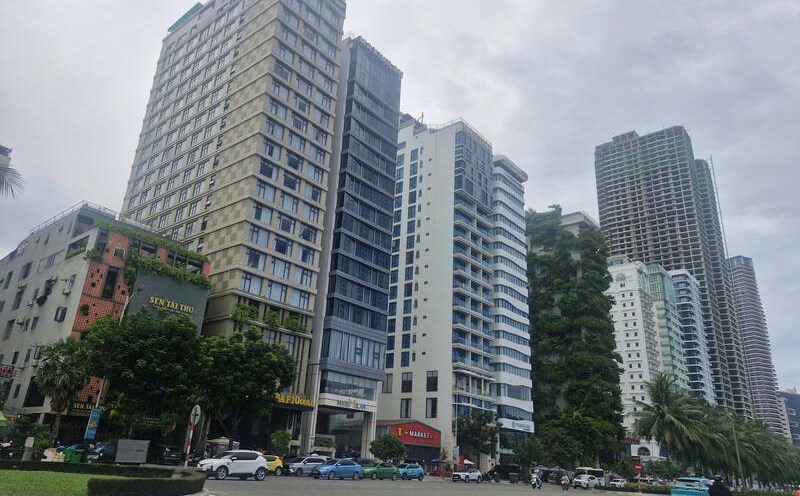According to Savills' Real Estate Market Report, in the second quarter of 2025, Hanoi recorded 8,000 new apartments for sale. In the first 6 months of the year, the total new supply reached about 14,900 units, 121% higher than the same period last year.
However, the average primary price is still at a high level, 91 million VND/m2, an increase of 40% year-on-year. In the second quarter of 2025, accounting for the largest proportion at 67% were still apartments priced over VND4 billion, the market continued to be lacking in primary supply of apartments priced under VND2 billion.
In terms of transaction volume, in the second quarter of 2025, Savills recorded about 5,200 units. Compared to the previous quarter, this figure recorded a decrease compared to the previous quarter but increased slightly year-on-year. On average, in the first 6 months of 2025, the total number of apartments sold reached about 13,100 units, an increase of 26% over the same period last year. Of which, 99% are transactions of Class A and B apartments.
According to Ms. Do Thu Hang - Senior Director, Consulting and Research Services, Savills Hanoi, the reason for the average primary selling price in the last quarter continuing to increase despite abundant supply is because the projects launched on the market are all projects with good positions and product positioning in the high-end segment. Moreover, in the context of increasingly scarce central land funds and high development costs, many investors choose to optimize commercial value.
The market recorded stable purchasing power and improved liquidity compared to the same period last year, showing that there was no downward pressure. The expectation of the possibility of increasing value in the future thanks to improved infrastructure and urbanization speed also makes investors willing to accept the current price. The fact that new supply is concentrated in the Group B segment, while the secondary market still holds prices and has not seen a deep down, contributes to consolidating the high price level in the whole market.
Regarding the structure of buyers in the market, Ms. Hang said that in the last quarter, the group of buyers for real estate was still present, but the proportion of investors continued to dominate.
"The current apartment price level is at a high level, causing real housing demand to narrow somewhat. For newly opened projects, there is still a certain distance in accessing the center or densely populated areas, so buyers mainly have expectations for the potential for value increase in the future. Some of them are also purchased for use, towards the time of product delivery, with flexibility in converting the purpose of use depending on market fluctuations. This leading mentality makes investors the main force in total transactions, Ms. Hang analyzed.
At the same time, there is also a certain ratio of purchasing for use, in advance of the project's completion stage and when the product is formed in the future, they can flexibly change the purpose, serve investment or use depending on market developments in the near future.
According to Savills' observations, investors are still maintaining quite positive expectations, especially in prime locations, capable of exploiting existing infrastructure or infrastructure expected to be deployed. These are the factors that continue to support the price level in projects with advantages, while increasing investment value over time.
However, Ms. Hang also noted that profit expectations in the current period need to be carefully considered. For projects with large supply and high selling prices, the ability to achieve the expected profit is not easy, especially in the context of liquidity being challenged if investors need to divest quickly or switch to another segment. However, if you determine long-term investment, especially in areas with strong urbanization rates and room for development, the opportunities are still open.
Regarding supply prospects, by the end of this year, the market is expected to have about 11,500 apartments for sale. However, the A and B segments still account for the main proportion, so product diversification has not yet occurred.











